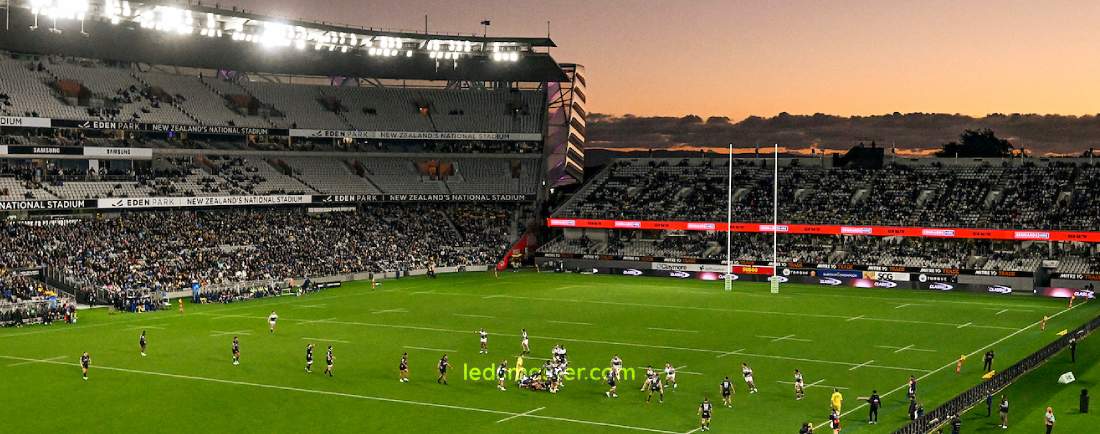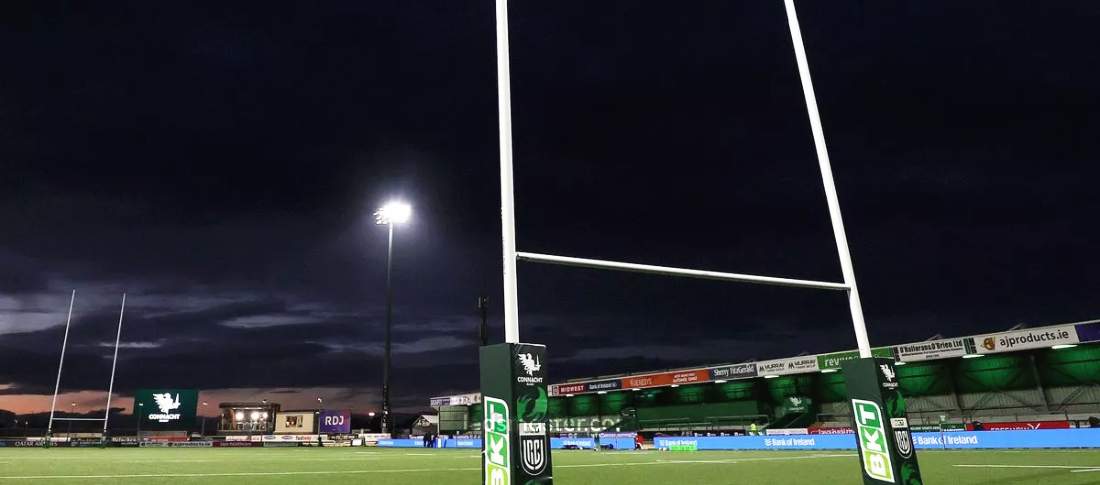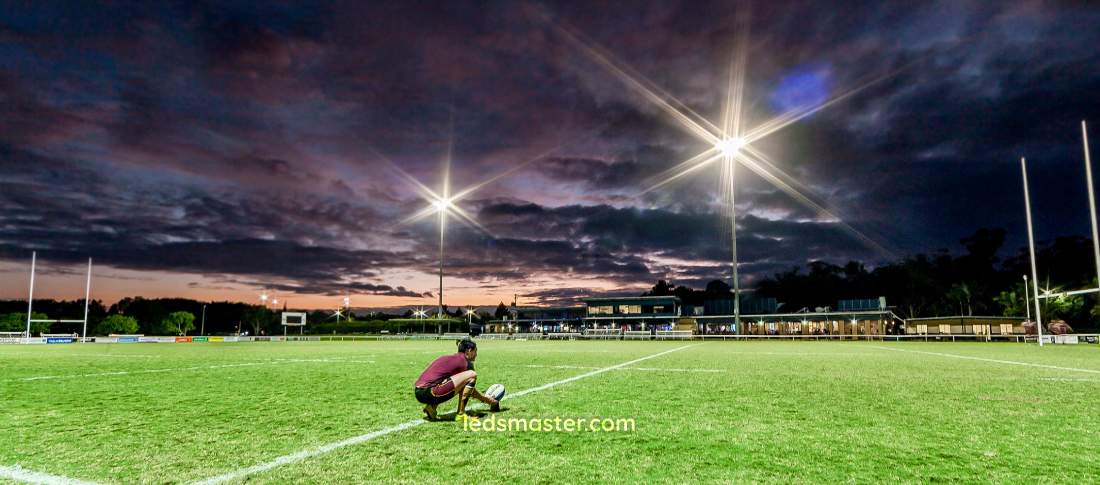Lighting up a rugby field isn’t just about brightness—it’s about creating optimal visibility for players and an enjoyable experience for spectators. Explore our range of advanced LED technologies and smart lighting systems designed to enhance every match. Whether you’re upgrading your current setup or planning a new installation, our solutions ensure your rugby field is always ready for peak performance under the lights.
Lighting on rugby fields is essential for improving visibility, ensuring player safety, and facilitating uninterrupted gameplay during evening matches or training sessions. Well-designed lighting systems not only illuminate the field but also enhance the overall spectator experience. The requirements for rugby field lighting vary significantly, ranging from local amateur leagues to professional stadiums, influenced by factors like the level of play, field dimensions, and environmental factors. This article delves into crucial considerations, cutting-edge lighting technologies, and best practices customized to address the varied needs of stakeholders involved with rugby fields.
Get your complimentary lighting design today
Table of Contents
ToggleAchieving appropriate illuminance levels is a critical aspect of rugby field lighting design, influencing visibility and player performance. Illuminance, measured in lux, determines the intensity of light that reaches the playing surface. For rugby fields, adhering to international standards is essential, with recommended illuminance levels typically ranging from 250 lux for amateur and training fields to over 750 lux for professional stadiums. These standards ensure that players can navigate the field effectively and safely, regardless of weather conditions or time of day, by providing sufficient brightness for clear visibility of the ball and other players.
The specified range of illuminance levels directly impacts player performance during matches and training sessions. Higher illuminance levels in professional stadiums not only enhance visibility but also support accurate decision-making and strategic gameplay. Conversely, lower illuminance levels on amateur and training fields still meet safety standards while promoting skill development and player confidence. Achieving these levels requires careful planning in fixture placement and light distribution to maintain consistent lighting across the entire playing area.
Uniformity of lighting across the rugby field is equally crucial to maintain fair play and prevent distractions. Consistent illuminance levels without areas of excessive brightness or shadow ensure that players have clear visibility throughout the field. Designers achieve uniformity by strategically placing luminaires and adjusting their angles to minimize variations in light intensity. This approach not only supports gameplay by reducing potential visual obstacles but also enhances spectator experience by providing a well-lit environment for viewing matches.

Designing for illuminance and uniformity involves addressing various challenges, such as field size, environmental conditions, and spectator needs. Larger stadiums may require more powerful luminaires and precise aiming to cover expansive playing surfaces adequately. Environmental factors like weather and ambient light sources also influence lighting design, necessitating adaptable solutions to maintain consistent performance. Moreover, considering spectator comfort and visibility adds complexity, as optimal lighting must balance between player requirements and audience enjoyment.
Effective glare control is crucial for optimizing the rugby field lighting environment, ensuring clear visibility and minimizing distractions for players and spectators alike. Glare, caused by direct and reflected light, poses a significant challenge as it can impair visibility and detract from the overall quality of the game experience. For rugby fields, where precision and clarity are paramount, managing glare becomes essential to maintaining fair play and enhancing safety.
Careful positioning and precise aiming of luminaires are fundamental strategies in mitigating glare on rugby fields. By directing light precisely onto the playing surface and avoiding unnecessary spillage beyond field boundaries, designers effectively reduce the impact of glare. This approach not only enhances visibility for players by minimizing bright spots and shadows but also improves the viewing experience for spectators. Strategic placement ensures that light is focused where it’s needed most, supporting optimal performance and reducing potential visual distractions during critical gameplay moments.
Modern rugby field lighting fixtures leverage advanced technologies such as specialized shielding and anti-glare features to further enhance visual comfort. These innovations are designed to reduce unwanted glare while maintaining high-quality illumination standards across the field. By controlling the distribution of light and minimizing reflective surfaces, these fixtures ensure that players can track the ball accurately and make decisive plays without the hindrance of glare. Such technological advancements not only improve player visibility and performance but also contribute to a safer and more enjoyable experience for spectators, who can follow the game with clarity and immersion.
Implementing effective glare control measures not only benefits player visibility but also significantly enhances the overall enjoyment of the game for spectators. Clear, glare-free lighting enables spectators to follow the action on the field without discomfort or visual obstructions, fostering a more engaging and immersive viewing experience. By ensuring consistent and comfortable lighting conditions, rugby field lighting systems support fair play, enhance the spectacle of the sport, and contribute to the overall atmosphere of excitement and anticipation during matches and events.

Selecting the appropriate lighting fixtures for rugby fields involves several critical considerations to optimize performance and efficiency. Key factors include the beam angle, color rendering index (CRI), and durability of the fixtures. LED lighting has emerged as a preferred choice due to its energy efficiency, long lifespan, and ability to provide high-quality illumination suitable for sporting environments. Fixture placement is equally important, as it influences uniformity of light distribution and minimizes light spillage beyond the field boundaries. Careful mounting at optimal heights ensures that the playing surface receives consistent and adequate lighting without causing glare or unnecessary light pollution in surrounding areas.
LED technology offers significant advantages for rugby field lighting, primarily through its energy efficiency and robust performance characteristics. LEDs consume less energy compared to traditional lighting sources, contributing to lower operational costs and reduced environmental impact. Moreover, LEDs provide excellent color rendering capabilities (CRI), enhancing visibility and color distinction on the field. Their durability and reliability ensure consistent performance even under demanding conditions, making them ideal for maintaining high standards of lighting quality throughout prolonged match durations.
Advanced lighting control systems play a crucial role in managing rugby field lighting effectively and efficiently. These systems offer versatility through programmable timers, dimming capabilities, and remote monitoring features. Operators can adjust lighting levels according to specific requirements, such as varying match schedules or training sessions, optimizing energy usage and operational costs. Automated controls also enhance operational flexibility, ensuring consistent lighting performance regardless of weather conditions or seasonal changes. By integrating smart controls, rugby field managers can maintain optimal lighting conditions that support player performance while enhancing spectator comfort and overall visibility during events.
Efficient lighting technologies play a pivotal role in enhancing sustainability and reducing operational costs associated with rugby field lighting systems. LED luminaires have revolutionized the industry by offering substantial energy savings compared to traditional lighting sources such as metal halide lamps. LEDs consume less energy while providing superior illumination quality, contributing to significant reductions in electricity consumption and operational expenses over their extended lifespans. Optimal fixture design and strategic placement further optimize energy efficiency by minimizing light wastage and ensuring precise distribution of light across the playing surface. These factors collectively contribute to sustainable lighting practices that benefit both the environment and the operational budget of rugby field facilities.
LED technology stands out for its exceptional energy efficiency and longevity, making it the preferred choice for rugby field lighting. LEDs not only consume less energy but also boast extended operational lifespans, reducing the frequency and costs associated with maintenance and replacement. Their superior color rendering capabilities enhance visibility on the field, ensuring clear and accurate illumination that supports player performance and safety during matches and training sessions. By adopting LED lighting solutions, rugby field operators not only achieve significant energy savings but also enhance the overall quality and reliability of lighting, thereby optimizing the sporting experience for participants and spectators alike.
Mitigating the environmental impact of rugby field lighting systems is essential to uphold sustainability standards and minimize disruption to local ecosystems. Light pollution, including glare and skyglow, poses significant challenges by affecting nocturnal wildlife and disturbing natural habitats. To address these concerns, modern lighting designs incorporate advanced shielding techniques and downward-directed lighting strategies. By focusing light precisely onto the playing field and minimizing light spillage beyond designated areas, these measures help mitigate light pollution and environmental disturbance. Adherence to local regulations and standards ensures that rugby field lighting installations are environmentally responsible, promoting harmony with surrounding communities while maintaining high standards of lighting performance and efficiency.

Regular maintenance is critical to uphold the optimal performance and extend the longevity of rugby field lighting systems. This proactive approach involves a series of essential practices aimed at ensuring consistent lighting quality and minimizing operational disruptions. Scheduled inspections play a pivotal role in identifying potential issues early on, allowing for timely interventions to prevent more significant problems that could lead to downtime during matches or training sessions. Cleaning of luminaires is another fundamental aspect of maintenance, as it helps remove dust, debris, and other contaminants that can accumulate over time and affect light output and clarity.
LED fixtures stand out in the realm of rugby field lighting due to their exceptional durability and reliability, which contribute to reduced maintenance requirements. Unlike conventional lighting technologies, LEDs typically require less frequent maintenance interventions, such as bulb replacements or adjustments. This reliability not only minimizes the risk of unexpected failures but also enhances operational efficiency during critical match periods when uninterrupted lighting is crucial for player performance and spectator experience. By adopting LED technology, rugby field facilities can mitigate operational disruptions, optimize maintenance costs, and maintain consistent lighting quality throughout the season. This proactive maintenance approach ensures that the lighting system performs reliably under varying weather conditions and meets the rigorous demands of professional sports environments, thereby enhancing the overall experience for athletes, spectators, and stakeholders alike.
Continuous advancements in lighting technology present significant opportunities for improving the efficiency and performance of rugby field lighting systems. One of the key advancements is the adoption of smart lighting systems, which integrate advanced sensors and adaptive controls to optimize operational efficiency and enhance user experience. These systems enable real-time adjustments based on environmental conditions, match schedules, or user preferences, ensuring that lighting levels are always optimized for maximum visibility and energy efficiency.
Smart lighting systems also facilitate predictive maintenance capabilities, allowing operators to proactively address potential issues before they escalate. By monitoring key performance metrics such as energy consumption, light output, and system health, smart lighting systems can detect anomalies and trigger maintenance alerts, thereby minimizing downtime and optimizing the lifespan of lighting fixtures.
Innovative features such as wireless connectivity and cloud-based management platforms further enhance the functionality of rugby field lighting systems. Wireless connectivity eliminates the need for complex wiring infrastructure, simplifying installation and reducing costs. Cloud-based management platforms provide centralized control and monitoring capabilities, enabling stadium operators to manage lighting settings remotely and in real time. This capability is particularly beneficial for coordinating lighting requirements across multiple venues or adjusting settings dynamically during events and matches.
LED lighting stands out as a premier choice for various applications, including rugby field lighting, due to its numerous advantages over traditional lighting sources. One of the primary benefits of LED technology is its exceptional energy efficiency. LEDs consume significantly less energy than conventional lighting, such as metal halide lamps, translating into substantial savings on operational costs over time. This efficiency not only lowers electricity bills but also reduces the carbon footprint of rugby field facilities, aligning with sustainable practices and environmental goals.
In addition to energy efficiency, LED lighting boasts a longer lifespan compared to traditional sources. LEDs are known for their durability and reliability, offering extended operational lifetimes that can exceed 50,000 hours of use. This longevity minimizes the frequency of replacements and maintenance interventions, reducing downtime and associated costs for rugby field operators. Moreover, the robust nature of LED fixtures ensures consistent performance even in demanding outdoor environments, providing reliable illumination during matches and training sessions.
Another key advantage of LED lighting is its ability to deliver superior light quality and uniform illumination across the rugby field. LEDs produce bright, clear light that enhances visibility for players and spectators alike, ensuring optimal conditions for gameplay and viewing. The uniform distribution of light reduces shadows and hotspots on the field, contributing to a more comfortable and engaging experience during sporting events. This high-quality illumination not only supports performance on the field but also enhances safety by minimizing glare and improving visibility of the playing surface.
Standards for rugby field lighting vary significantly based on the level of play and the size of the field. Amateur and training fields generally have lower illuminance level requirements compared to professional stadiums that host competitive matches.
For amateur and training fields, the illuminance levels can typically range from around 250 lux to 500 lux. These fields are designed to accommodate recreational play and practice sessions where the lighting requirements are less stringent compared to high-level competitions. The lower illuminance levels still ensure adequate visibility for players during training activities and local league matches, while also supporting energy-efficient lighting solutions appropriate for smaller budgets.
In contrast, professional stadiums that host competitive rugby matches require much higher illuminance levels to meet the exacting standards of professional sports organizations and broadcasting requirements. These stadiums often necessitate illuminance levels ranging from 750 lux to 2000 lux or more, depending on the specific stadium size and the level of broadcasting and spectator visibility needed during televised events. The higher illuminance levels ensure optimal visibility for players, officials, and spectators, enhancing the overall quality of the sporting experience and ensuring fair play under consistent and uniform lighting conditions.
The variation in lighting standards reflects the diverse needs of rugby field stakeholders, from grassroots participation and local leagues to elite professional competitions. By adhering to these standards, rugby field facilities can provide appropriate lighting environments that support safe and effective gameplay at all levels of competition, while also meeting the specific operational and budgetary constraints of each facility.
Designing effective rugby field lighting involves careful consideration of several key factors that impact both performance and spectator experience. Field dimensions play a crucial role in determining the number and placement of luminaires needed to achieve uniform illumination across the entire playing surface. Larger fields require more powerful lighting systems to ensure consistent light levels from one end of the field to the other, while smaller fields may benefit from more compact and energy-efficient lighting solutions.
Player safety requirements are paramount in rugby field lighting design. Adequate lighting levels and uniformity help players see clearly and react quickly to movements on the field, reducing the risk of injuries during fast-paced matches. Lighting design must also account for environmental conditions such as wind, rain, and fog, which can affect visibility and the performance of lighting fixtures over time. Weather-resistant luminaires and robust mounting systems are essential to maintaining consistent lighting quality under varying weather conditions.
Spectator viewing angles are another critical consideration in rugby field lighting design. The positioning and aiming of luminaires must ensure that spectators have clear visibility of the entire field without glare or shadows obstructing their view. Glare control measures, such as shielding and anti-glare features in modern lighting fixtures, help minimize discomfort and ensure an enjoyable viewing experience for spectators seated around the field perimeter.
Optimal placement of luminaires is key to achieving uniform illumination and minimizing light spillage beyond the field boundaries. Careful positioning ensures that the playing surface receives sufficient light while reducing unnecessary light pollution in surrounding areas. By strategically placing luminaires at appropriate heights and angles, rugby field facilities can enhance lighting efficiency, minimize operational costs, and create a safe and visually appealing environment for players and spectators alike.
Creating optimal rugby field lighting requires meticulous planning, strict adherence to standards, and the integration of cutting-edge technologies to improve visibility, energy efficiency, and sustainability. By focusing on achieving appropriate illuminance levels, controlling glare effectively, and considering environmental impacts, stakeholders can establish lighting systems that enhance safety and enjoyment for both players and spectators. Ongoing advancements in lighting solutions ensure that rugby fields are consistently well-lit, resilient against environmental factors, and economically viable over time.